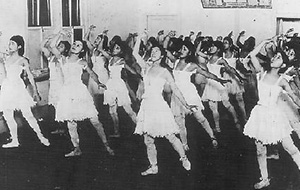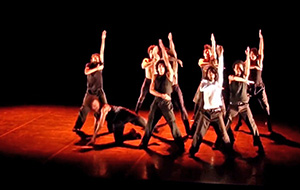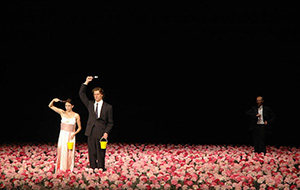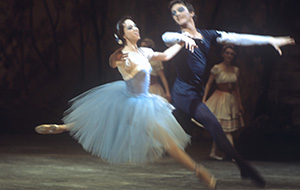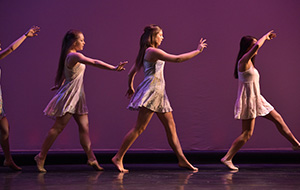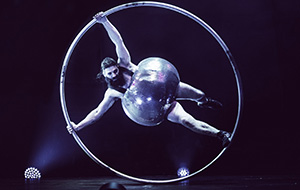Ricardo Walker-Harris is one of the newest cast members in Disney’s The Lion King, currently playing at the Lyceum Theatre in London.
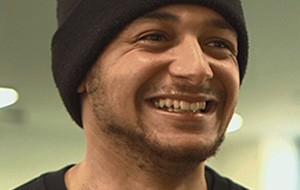 Born and raised in Angel, Islington, Ricardo always loved to dance but was unaware it was a possible career option. He did not even know what a drama school was until it was suggested he attend one, but he successfully gained a place at Urdang on the foundation course and subsequently got a scholarship to train there for a further three years.
Born and raised in Angel, Islington, Ricardo always loved to dance but was unaware it was a possible career option. He did not even know what a drama school was until it was suggested he attend one, but he successfully gained a place at Urdang on the foundation course and subsequently got a scholarship to train there for a further three years.
Ricardo auditioned for Disney’s The Lion King in December 2015 and joined the production in May 2016. See Ricardo in action here.
Have you always wanted to be on stage?
When I was ten years old I told my entire primary school I wanted to be the ‘English Will Smith’ so I guess there has always been a part of me that has enjoyed performing in front of people, whether that was in the playground when I was younger or now on a West End stage.
Where did you train, and what was it like?
I trained at The Urdang Academy for four years. I did the foundation course for a year and then went on to do the three year diploma course. It was tough, especially in my first year. I had pretty much no experience when it came to musical theatre, but as you get into it you learn what you’re good at and you have plenty of people to help you with the skills you are lacking.
Describe a day in your life now.
I always have a nice and relaxing morning, and often spend it baking cakes for the cast to eat. The evenings are unpredictable as I share a dressing room with seven other boys. It could be nice and peaceful while we all nap to some jazz music or there could be some samba being played!
How important is your ranging and diverse training in your work today?
For me it’s incredibly important to be as diverse as possible. As a dancer it’s always good to know as many styles as possible so you are ready for any audition and this often requires being able to sing. With so many new musicals coming out at the moment a casting might go out for a hip-hop dancer with the ability to rap or a strong jazz dancer who can sing opera. You just never know when you work in an ever-changing industry.
What’s the most rewarding thing about dance and the performing arts?
For me it would be the ability to inspire people wherever you are. A lot of people will be inspired by going to watch shows but inspiration can be found in so many places; I was inspired by a relative dancing in the front room of my mum’s house.
Do you have any pre-show rituals?
After I’ve stretched and done my warm up I usually start tap dancing. I always fidget when I’m nervous, so that’s my way of releasing my nerves without looking too crazy in front of the cast!
What were rehearsals like for The Lion King?
Amazing, but without a doubt the most rigorous rehearsal process I’ve ever been through. We always started with the most complex choreography in the morning, so I always made sure I got in at least thirty minutes before we started so I could really warm up my body. If anything goes wrong, we repeat the number. By the time I did my first performance in front of an audience, I knew the choreography so thoroughly, and it is this attention to detail that makes The Lion King such an outstanding show.
What were you most looking forward to about starting your Lion King contract?
It was such an amazing moment when I found out I was going to be joining The Lion King. It is such a massive production to be a part of and there is so much talent amongst the cast and creatives of the show. I loved trying on the costumes, as every time I tried on a different outfit, it would feel more real.
What is your advice to an aspiring dancer?
Never stop trying to be the best. If you get injured be patient, wait for your body to heal. If you can’t afford to go to class then dance in your kitchen – I sure did and I still do! If you have people pushing you and making sure you don’t get a minute’s rest just know those are the people who truly care about you. I wouldn’t be where I am now if it was not for my mum, and you wouldn’t be reading this either! I owe it all to her and that’s because she is always there making sure I am giving it everything I have. If you feel like you have no one to support you though don’t worry, be brave and tell yourself you can do this.
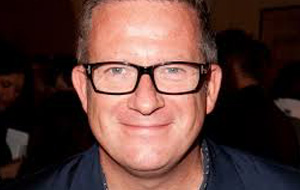 At the end of June, former ballerina Darcey Bussell CBE, in her capacity as President of the Royal Academy of Dance, escorted Sir Matthew Bourne to Buckingham Palace for a special occasion. In this exciting event as the Patron of the Royal Academy of Dance, Her Majesty The Queen presented the recently-knighted Sir Matthew Bourne with the Academy’s Queen Elizabeth II Coronation (QEII) Award, internationally renowned as one of the most coveted honours in dance. Bourne has contributed above and beyond to the dance industry, introducing new audiences and dancers to his world of performing.
At the end of June, former ballerina Darcey Bussell CBE, in her capacity as President of the Royal Academy of Dance, escorted Sir Matthew Bourne to Buckingham Palace for a special occasion. In this exciting event as the Patron of the Royal Academy of Dance, Her Majesty The Queen presented the recently-knighted Sir Matthew Bourne with the Academy’s Queen Elizabeth II Coronation (QEII) Award, internationally renowned as one of the most coveted honours in dance. Bourne has contributed above and beyond to the dance industry, introducing new audiences and dancers to his world of performing.
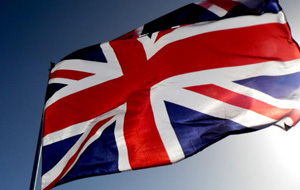 With the news of the UK’s exit from the European Union still reverberating, there has been lots to take in since the announcement of the referendum result on 24 June. Voting remain or leave have many different viewpoints attached, however in terms of the arts it is clear that the UK would have benefitted from remaining in the European Union.
With the news of the UK’s exit from the European Union still reverberating, there has been lots to take in since the announcement of the referendum result on 24 June. Voting remain or leave have many different viewpoints attached, however in terms of the arts it is clear that the UK would have benefitted from remaining in the European Union.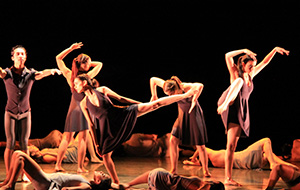 Whilst exercise is renowned for its stress-busting and happiness-inducing benefits, the same benefits of dance are sometimes overlooked. There are the obvious physical benefits of dance, in that it keeps the body fit and healthy, encouraging strong, lean muscle mass and a good range of flexibility, another valued strand of overall fitness. Often the mental benefits of dance – and exercise – are focused on less, however they have just as much value for the body, mind and wellbeing.
Whilst exercise is renowned for its stress-busting and happiness-inducing benefits, the same benefits of dance are sometimes overlooked. There are the obvious physical benefits of dance, in that it keeps the body fit and healthy, encouraging strong, lean muscle mass and a good range of flexibility, another valued strand of overall fitness. Often the mental benefits of dance – and exercise – are focused on less, however they have just as much value for the body, mind and wellbeing.
